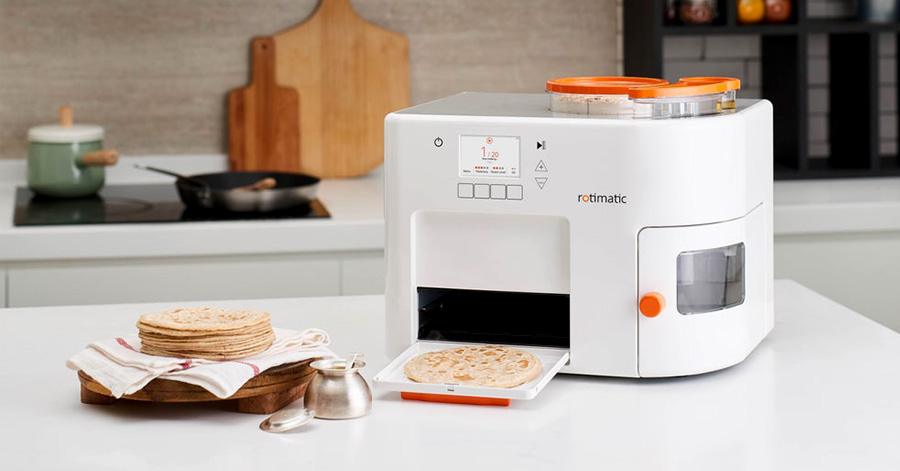Pranoti Nagarkar - The Engineer Who Taught a Machine to Make Rotis
- Oct 2025
- 134
- 0

BENGALURU, October 2, 2025:
For millions of households, making rotis is a daily ritual. For engineer-turned-entrepreneur Pranoti Nagarkar, it became a grand engineering puzzle. As co-founder of Zimplistic, Nagarkar created Rotimatic, the world’s first fully automated roti-making appliance, one that has now served more than 200 million rotis across 100,000 homes in 58 countries.
Nagarkar, who studied mechanical engineering in Singapore, approached the roti as a non-Newtonian fluid, its properties shift with pressure, heat, and time. Her aim: to build a machine that could adapt like a human cook, sensing, deciding, and correcting in real time at the push of a button.
Breaking Down the Roti Ritual
Building Rotimatic meant reverse-engineering the five stages of the process:
-
Measuring flour, water, and oil
-
Kneading into a dough ball
-
Shaping and flattening
-
Cooking until puffed
-
Ejecting a hot roti
The form factor was kept microwave-like for kitchens worldwide. Instead of batch-kneading, Nagarkar chose micro-kneading, preparing one dough ball at a time. It made the machine more complex but ensured precision and repeatability.
Engineering Innovations
| Innovation | How It Works | Impact |
|---|---|---|
| Micro-kneading | One dough ball at a time | Lab-like precision, consistency |
| Tactile sensors | Mimic human feel of dough | Adjust flour-water-oil ratios in real time |
| IoT connectivity | Remote diagnostics & OTA updates | Global support without service visits |
| Adaptive learning | Learns flour mixes over cycles | Personalized recipes and memory |
| Vision AI (NEXT) | Camera checks puff quality | Auto-adjusts kneading and hydration |
Global Footprint
Manufacturing began in Malaysia but later shifted to the Bengaluru-Mysuru belt, aligning with India’s supply chains and cost advantages.
-
First markets: Singapore & US
-
Current reach: 58 countries
-
Top market: United States
-
India push: More affordable pricing with local production
Consumer Adoption
Rotimatic isn’t just about wheat flour rotis anymore. Users have experimented with:
-
Protein powders & superfoods
-
Millets & multigrain mixes
-
Spices & gluten-free blends
The AI adapts to new mixes, learning from trial runs and storing recipes in memory.
By the Numbers
| Metric | Figure |
|---|---|
| Rotis served | 200M+ |
| Homes worldwide | 100,000+ |
| Countries | 58 |
| Top market | United States |
| Founded | 2008 (17 years) |
Next on the Menu: Rotimatic NEXT
The upcoming Rotimatic NEXT introduces vision AI, cameras and sensors that monitor every puff and air pocket, correcting gluten bonds and hydration instantly.
“It’s the same idea taken further,” says Nagarkar. “More eyes and ears, better feedback, better food.”
Bottom Line
From a thermocol prototype in Singapore to AI-driven kitchens worldwide, Pranoti Nagarkar transformed a centuries-old culinary ritual into a modern engineering marvel. With Rotimatic NEXT, she isn’t just automating food, she’s proving that machines can learn the art of cooking.



Comments
No comments yet.
Add Your Comment
Thank you, for commenting !!
Your comment is under moderation...
Keep reading blog post